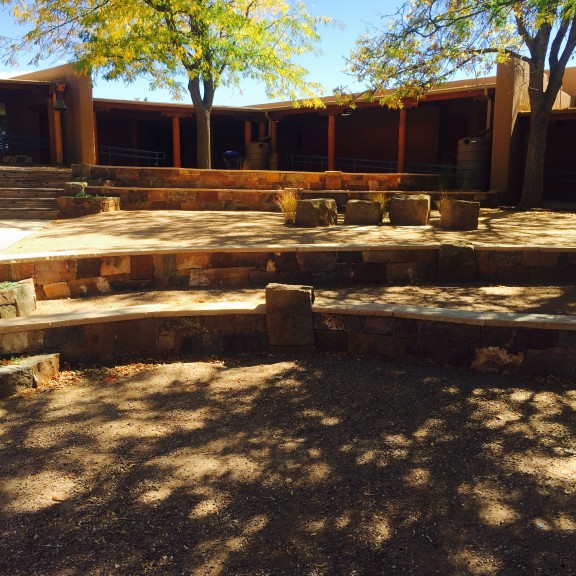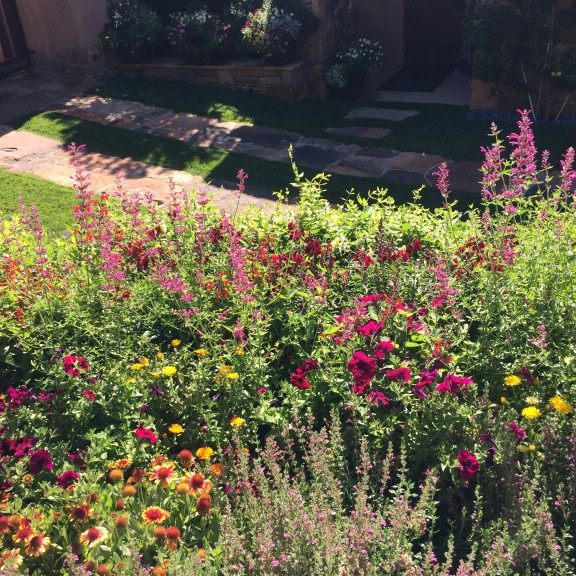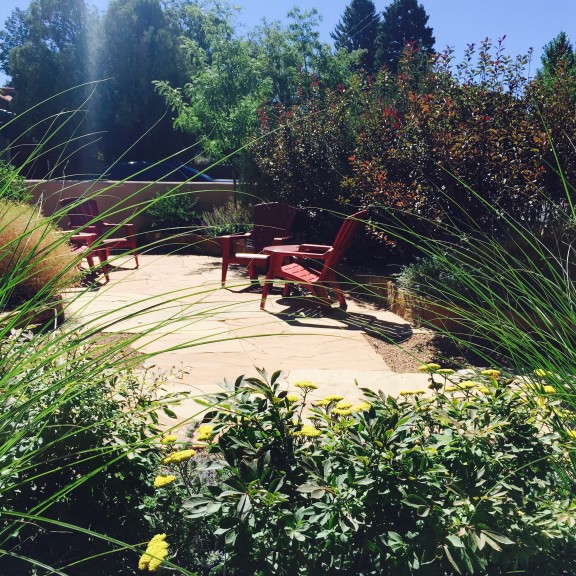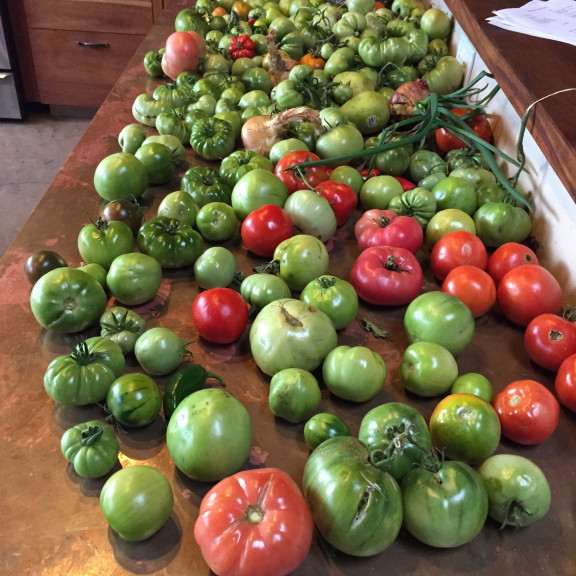Glory of Autumn Grasses in Santa Fe
Ornamental Grasses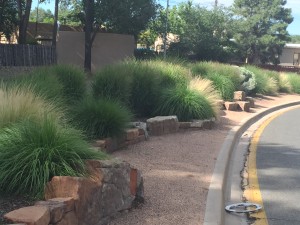
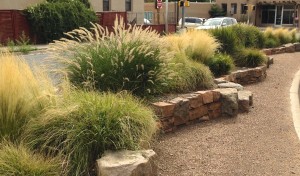
Paseo Medians
Many people ask me about the ornamental grasses on our medians in downtown Santa Fe, between Don Gaspar and Galisteo on Paseo de Peralta. There are several varieties that work together to create a symphony of color and texture. There are several things to remember if you want to plant a landscape dominated by grasses.
First, there is micro climate. Some of these grasses don’t thrive at higher than zone five, which means that if you live above downtown and you are planning to plant on the cold side of your house, they aren’t going to work. The second is sise. Remember many of these can get wite big, so don’t place them too close. Other factures are time of seed bloom, color change, how soon they go brown in the fall, how soon they come back in the winter, and do the dried stalks hold up to wind and snow over the winter.
It is best to plant in masses, alternating some varieties but not too many. Find a rhythm and stick to it, then break it up with a splash of something else. The following is a run down on tried and true varieties for the Santa Fe area.
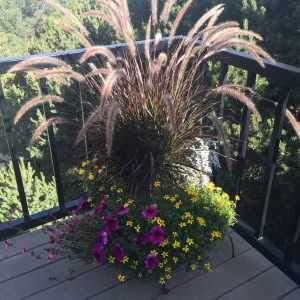
Purple fountain grass in pot
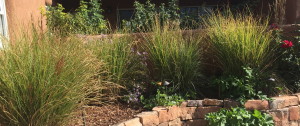
miscanthus
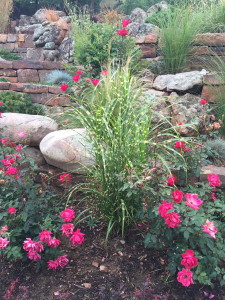
zebra miscanthus
Miscanthus. There are several varieties here but the common one is with the thin threads about 4 feet high. Miscanthus sinensis ‘Graccillimus”. It doesn’t bloom until October, but then lasts all winter. Comes in quickly when cut to the ground in the spring, like mid March. For a slightly smaller variety that looks similar, try miscanthus ‘morning light’.
Other miscanthus does not behave quite the same, as the blades are flatter, but still worthy of consideration. Miscanthus ‘Goliath’, can get about 8 feet high and 4 feet wide.
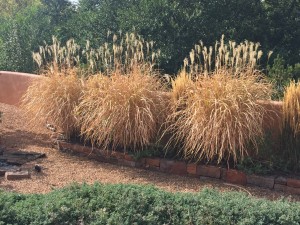
Miscanthus Goliath
It is great for privacy, or breaking up the view of a fence, but be sure to give it plenty of space. It is quick to turn in the fall, but does usually withstand the winter weather, thought the seed plumes blow off. Another of my favorite is the Flame grass, miscanthus purpurascens. The leaves start out bringt green but turn purple as the season progresses, with bronze seed heads. About 4 feet high also, and very dense, the blades are thick. Other lovely members of the miscanthus family include the variegated, also a flat blade but with white stripes, which stands about five feet. This one seems a little more vulnerable to drought than the others as I have seen it die back in the event of an irrigation failure. Also consider miscanthus zebra, with strips going across the blades, for something different.
Next we will touch on Pennisetum. These are often treated annuals in this climate, though some will thrive for several years in a warm spot. Purple Fountain grass, even as a annual is worth it with its purple leaves and glowing pink seed heads. It is often used here in containers as it maxes out in size at about 3 feet tall and 1.5 feet wide. It dies back after the fires few hard frosts and will beed to be removed. With much promiotoon of the pink fountain grass, it just doesn’t preform quie as well. A hardy pennisetum thrives as a perennial on my median, pennisetum Oriental, about 2 feet tall and wide, with little pink bottle brush tops. It is very borderline in Santa Fe, so you are only in luck for this one if you have a very warm spot for it.
Another very special stand out is the Switch Grass. Panicum vigartum, also known as Heavy Metal Switch is about four feet tall with intense blue greens turning to red in the fall. Seed heads come in early and catch the late summer light. Also look for Shenandoah Red Switch Grass, a more red color of foliage. Note that both of these come in late in the spring, and often wait until you have doubted if they are coming or not.
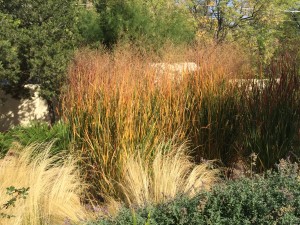
Switch Grass and Nasella
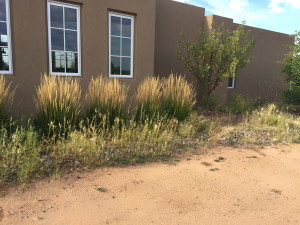
Karl Forrester
To wrap up our ode to tall gresses, I must mention Karl Forrester. Anout 5 feet high, upright and straight, it Is not one ot be ignored. It comes in early, and works very well in a formal line. Some people have gone as far to call it too formal.
For contrasts to these grasses, include nasella (Sikly thread grass), blue fescue and blue avena grasses.
In summary, experiment, repeat often but use much variety, don’t get attached, and have fun.
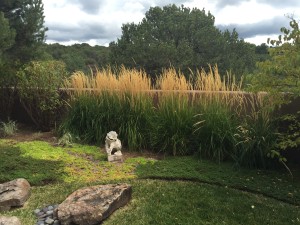
Karl Forrester

